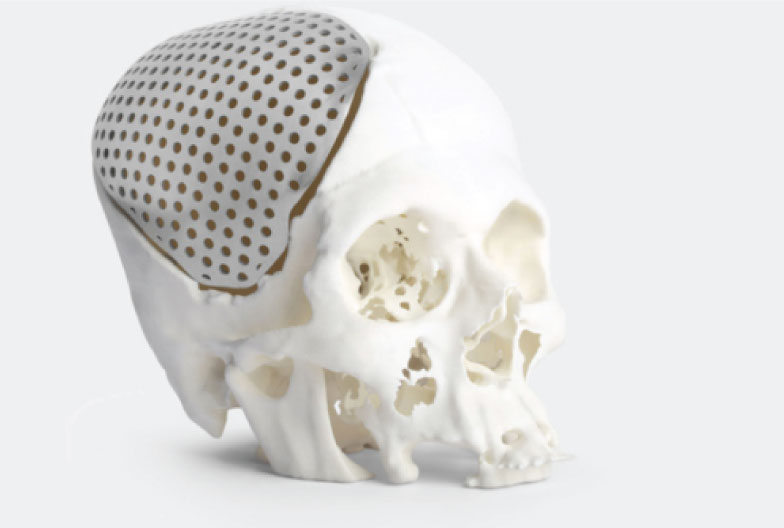Titanium 3D Printing: Methods, Printers, and Applications

Titanium 3D printing represents a cutting-edge technology that is reshaping manufacturing processes. Utilizing this method allows industries to create complex structures and parts that would otherwise be challenging to manufacture. This article delves into various aspects of titanium 3D printing, discussing the methods, printers, and applications.
Titanium is known for its high strength-to-weight ratio, corrosion resistance, and biocompatibility, which makes it a favored material for various industries. The ability to 3D print titanium has further extended its application, giving rise to innovations and efficiency in fields like aerospace, automotive, medical, and more.
3D printing with titanium has democratized the production of highly specialized components, making them accessible to a broader range of manufacturers and industries. The fusion of technology with this versatile metal has not only expanded the horizons of traditional manufacturing but has also sparked a revolution in design and engineering.
From enabling the creation of complex geometries to reducing the time and cost of production, titanium 3D printing is at the forefront of a manufacturing renaissance. Its impact is felt across various domains, propelling innovation and customization to unprecedented levels, and signifying the arrival of a new era in industrial manufacturing.
Methods of 3D Printing Titanium
Selective Laser Melting (SLM): SLM utilizes a high-power laser to melt and fuse metallic powders together. The process involves layer-by-layer addition, creating a dense and robust 3D printed titanium part.
Electron Beam Melting (EBM): EBM employs a high-energy electron beam to melt titanium powder. It’s often used in aerospace and medical industries due to its ability to create high-strength parts.
Direct Metal Laser Sintering (DMLS): Similar to SLM, DMLS also uses a laser but differs in that it sinters rather than fully melts the metal particles. It’s a popular method to 3D print titanium for various applications.
Titanium 3D Printer Technology
Several companies are at the forefront of producing advanced titanium 3d printer technologies. These include renowned names like EOS, Arcam, and SLM Solutions. The printers provide a range of features, making them suitable for different industry requirements.
EOS’s Titanium Printers: They offer flexibility and precision, with the ability to print complex geometries.
Arcam’s EBM Machines: Known for producing strong components, they are preferred in industries requiring high-density and corrosion-resistant parts.
SLM Solutions’ Printers: SLM Solutions specializes in various methods, including SLM and DMLS, to create highly detailed and durable 3D printed titanium objects.
Applications of Titanium 3D Printing
The unique characteristics of titanium and the advancement in 3D printing titanium technologies have made this process highly applicable in various fields:
Aerospace: Due to its high strength and low weight, titanium 3D printing is extensively used in aerospace for parts such as engine components, brackets, and frames.
Medical Industry: Titanium’s biocompatibility makes it a favored choice for medical applications like dental implants, prosthetics, and surgical tools.
Automotive Sector: From engine components to custom-made parts, the automotive industry leverages titanium 3D printers for enhanced performance and innovation.
Research and Development: Printing titanium has become a tool for researchers and engineers, facilitating rapid prototyping and experimental designs.

Challenges and Future Prospects
Despite the many advantages, there are challenges in titanium 3D printing. The process requires careful control and precision. The cost of materials and specialized equipment might limit accessibility for smaller enterprises.
Nevertheless, the continuous research and development in the field are leading to more cost-effective and efficient solutions. The future looks promising, with a growing trend towards sustainability and customization. The capability to 3D print titanium is paving the way for new possibilities, transforming traditional manufacturing practices.
Conclusion
Titanium 3D printing is undoubtedly a game-changer, offering innovative solutions across various industries. From aerospace to medical fields, the ability to create complex, customized, and high-strength parts has opened new avenues. With continual advancements in titanium 3D printer technology, it is only a matter of time before this method becomes even more widespread and accessible.
The ongoing exploration of methods, printers, and applications of 3D printing titanium will continue to drive innovation, efficiency, and sustainability. As technology evolves, so does the potential of titanium, solidifying its role as a vital material in modern manufacturing.
The integration of titanium 3D printing into the supply chain is not only reshaping the way products are conceived but also how they are produced and delivered. The ability to create on-demand, tailored solutions presents a unique opportunity for businesses to respond to market demands with agility and precision. Such adaptability fosters a competitive edge, enabling industries to stay ahead of the curve and adapt to ever-changing consumer needs and technological landscapes.
Furthermore, the environmental implications of titanium 3D printing should not be overlooked. By allowing for more efficient use of materials and reducing waste, this technology promotes a more sustainable approach to manufacturing. The shift towards localized production also has the potential to reduce transportation emissions, contributing to broader efforts to mitigate environmental challenges. Together, these factors underscore the multifaceted impact of titanium 3D printing, cementing its significance not just as a technological marvel but as a harbinger of a more responsible and innovative industrial future.








